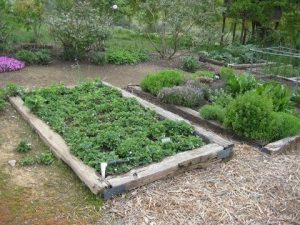On a bright sunny morning, sometime soon, you will have this irresistible urge to plant your spring vegetable garden. Before you pick up that trowel or tear into that first seed packet, check out the following tips to help you succeed.
Whether it’s a flat of bedding plants from a nursery or seedlings you’ve started indoors, you do not want to allow the transition from pots to garden bed to induce transplant shock. “Hardening Off” means to gradually introduce young seedlings to the outdoor conditions of sun, wind and changing temperatures. This process can take a week or two, so try not to rush it.
The ideal time to plant is on an overcast day, with rain in the forecast, and no frost or high temperatures expected. But since life isn’t perfect, the next best time is in the late afternoon or early evening. The day before planting, water your young plants so that the soil in the pots is moist. Be sure not to pull the plant from its container until you have the hole dug for it. Holding the small plant slightly upside down, lightly tap the bottom to loosen the root-ball. If the root-ball is a solid mass, gently tease the delicate young roots away from the center.
Except for tomatoes, plant the seedling at about the depth it was in its container. If the soil is cold or very wet, planting too deeply could rot the stem. (Tomatoes planted up to their first set of true leaves will set fruit earlier, and yield more than those planted at root-ball level. Experiment for yourself and see). Now firm the soil around the seedlings and water thoroughly. Your seedlings have become established when you see healthy new growth.
“Direct-Sowing Seeds” is easy and fun, but be sure to plant the seeds at the right depth. Plant too deeply and they may never germinate-too shallow and the top soil may dry out before germination. Generally, a large seed like pea, sunflower, squash or melon can be planted at a depth of three times its diameter; small seeds should be planted about 1/8th inch deep. Read the seed packet to be sure.
You can request the publication “Tuolumne County Vegetable Planting Dates” from the University of California Cooperative Extension by calling the Master Gardener Hotline at (209) 533-5912. This describes what to plant and when, providing information for gardening at both above and below 2500 feet in elevation.
Briefly let me suggest the following vegetables to plant in May and June:
Below 2500′ Elevation: Snap beans, cantaloupes, carrots, celery, sweet corn, cucumber, eggplant, peppers, potatoes, pumpkins, radishes, squash and tomatoes.
Above 2500’Elevation: Snap beans, cantaloupes, carrots, celery, chard, corn, cucumber, eggplant, peppers, potatoes, pumpkins, radishes, squash and tomatoes.
Betty Hensley is an experienced Master Gardener who loves propagating new plants.


